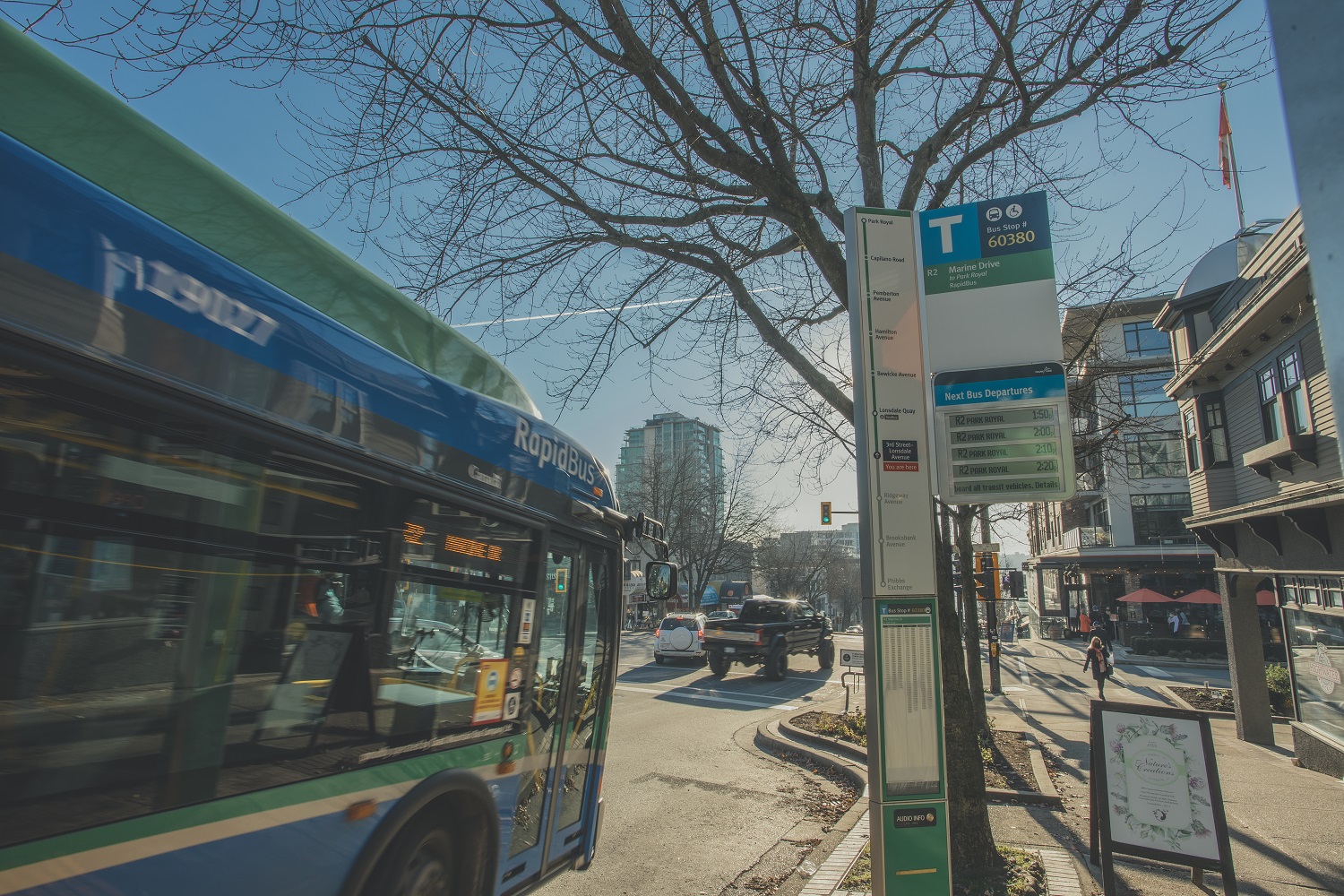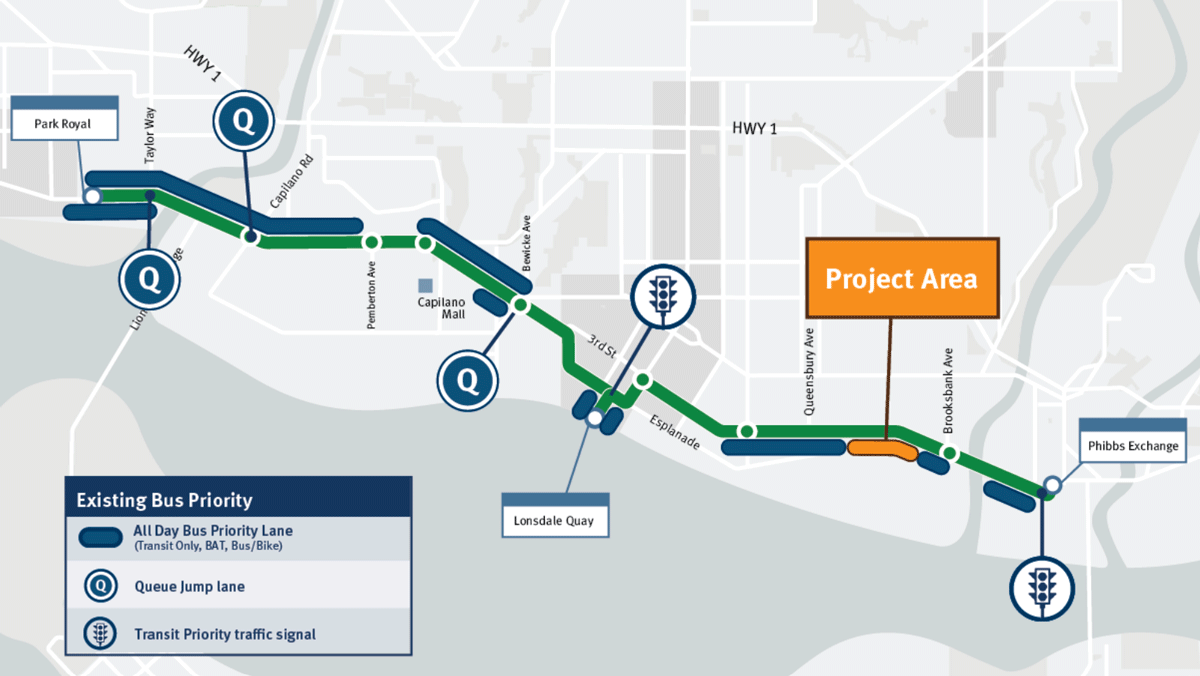Road improvements to save RapidBus commuters around six minutes per trip
Road improvements to save RapidBus commuters around six minutes per trip

The City of North Vancouver and TransLink have broken ground on a new transit priority lane for the R2 Marine Drive RapidBus. When complete, this new lane will save R2 customers around six minutes per trip, giving more consistent and predictable travel times for bus riders.
RapidBus is TransLink’s premium bus service with higher frequencies, fewer stops, 60-foot articulated buses, all-door boarding, real-time information at bus stops, and even free WiFi while you’re onboard. One of the main things that makes RapidBus faster than other bus services is transit priority lanes. All RapidBus routes have some dedicated bus lanes along their corridors, and the more time customers spend in those lanes – the faster they get to where they need to go.
Currently, the R2 has bus priority lanes along much of the corridor between Phibbs Exchange and Park Royal. However, there are portions of the corridor without a priority lane, which means the bus has to weave in and out of traffic to reach its destination. During times of heavy congestion, this can greatly slow down your trip.
The improvements that are now under construction will connect bus lanes along East 3rd Street and Cotton Road between Queensbury and Gladstone Avenues, connecting bus lanes on either end of that stretch ensuring that the bus does not have to weave in and out of rush hour traffic.

In this section of the corridor, customers usually spend 9 minutes to travel through that area, as the bus waits to merge into a congested traffic lane. After the improvements, bus travel would take around 3 minutes instead – speeding up trips by around 6 minutes in that section of the R2 corridor. This is part of our efforts to elevate customer experiences; because the faster and more convenient transit trips are – the more likely customers are to keep using transit instead of driving.
This $2.5 million investment is part of our ongoing work to improve RapidBus service and to make buses more reliable for customers. Once this project is done, we’re actively looking to continue working with the City of North Vancouver to install more transit priority lanes along the corridor as well.
To see more of the ways we’re working to improve bus speed infrastructure, walking/cycling paths, and roads – check out our Municipal Funding Program. Did you know TransLink invests over $100 million into improving and building new local infrastructure every year?
Dan Mountain
I'm just a guy who hates bios, but likes trains... and buses... and SeaBuses.





